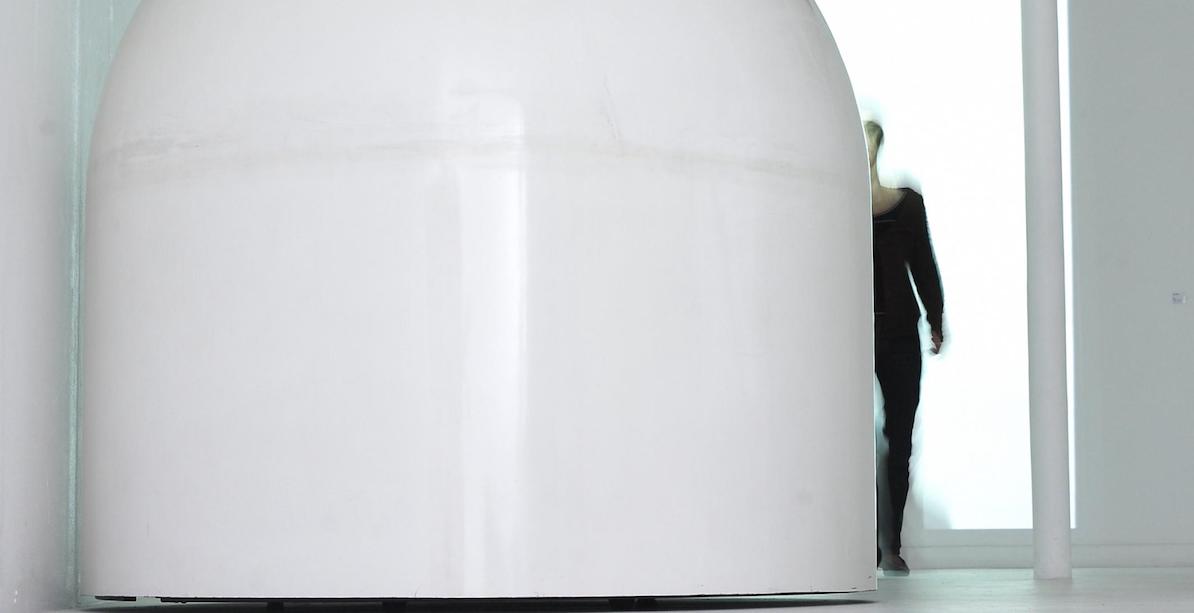Robert Breer the pioneering experimental artist has died age 85. The internationally respected American artist currently has a major exhibition at the BALTIC Centre for Contemporary Art in Gateshead which runs until 25 September. Breer a filmmaker and sculptor was Born in Detroit in 1926 and is one of the most ground-breaking and celebrated animators in history. This was his most comprehensive exhibition to date, spanning two floors at BALTIC with work from 1950 to the present day. His career as artist and animator spans 50 years and his creative explorations have made him an international figure. He began his artistic pursuits as a painter while living in Paris from 1949-59. Using an old Bolex 16mm camera, his first films, such as Form Phases, were simple stop motion studies based on his abstract paintings.
Baltic Centre Gateshead pays tribute to pioneer with retrospective until 25 September
Breer was the son of an amateur 3D home-movie maker and chief engineer at the Chrysler Corporation, He initially studied engineering at Stanford, before switching to painting. Early enthusiasms were a 1935 BMW open cockpit racing car and stunt flying lessons in a bi-plane. His first real passion, however, was the reductive purity of Piet Mondrian’s grid-based abstract paintings. in 1949, Breer developed his own take on hard edge abstraction, exhibiting at the Galerie Denise René. He soon rejected the stability and harmony of Mondrian’s compositions, introducing implied movement and free-floating lines into his paintings. His forms became irregular and wrestled against each other, appearing in a permanent state of unrest. Around ten canvases from the 1950s, including Composition with Three Lines, 1950, Time Out, 1953 and Three Stages Elevators, 1955 will be included. Many have not been exhibited for several decades.
Developing the implied movement of his paintings Breer also started experimenting with animation, first with flip books and then with film. In his first film, Form Phases, 1952, the designs of his paintings were set into motion, morphing from one thing into another and shifting in colour and cinematic space. Form Phases IV, 1954, a tour de force of movement and instability sees forms, colours, lines and actions burst, complement and contradict each other across every square inch of screen. A tension between the moving and still image defines many of these early works: Recreation I, 1956-57 uses a different image for every single frame (24 frames per second), rejecting the supposed reality that traditional film represents and revealing. Breer became ever-concerned with the interplay between abstraction and representation. Fuji, 1974 jumps from filmed footage of Breer’s wife by a train window to a rotoscoped sequence of a ticket collector and countless drawn depictions of Mount Fuji, all of which slip back and forth into and out of abstraction. In Swiss Army Knife with Rats and Pigeons, 1980 the functional form of the knife and its red colour separate and dance around each other before reuniting. The exhibition includes these and other pioneering works from 1952 into the 1990s.
BALTIC’s Level 4 gallery has devoted to another important body of Breer’s work, the motion sculptures or ‘floats’, begun in the 1960s. These simple, almost minimalist forms, move at speed that is almost imperceptible before changing direction upon a collision. Recreating the motion and flux of his films in three dimensions, works such as Zig, 1965, Column, 1967 and Sponge, 2000 surround the viewer, allowing form and change to be experienced in real time and space. Breer’s greatest achievement, perhaps, has been to use one force to define its opposite – movement to counteract movement, pause to dramatise speed, and representation to concentrate abstraction. The artist’s influence on the industry led the Harvard Film Institute to refer to him as the “kinetic poet of the avant-garde”.In 1987 Breer was awarded the American Film Institute’s Maya Deren Award, a lifetime achievement award for underground and independent filmmakers.
Photo: Detail ROBERT BREER Courtesy The Baltic

